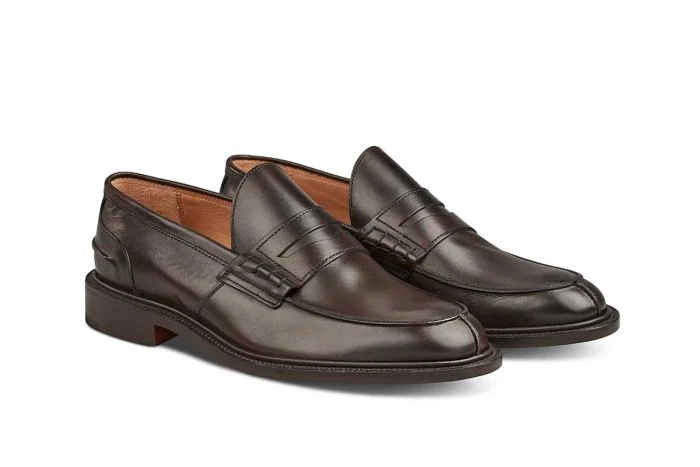THE DESCRIPTION
The loafer style dates back to Norway in the early 1930s. Taking inspiration from the moccasin shoes worn by native Americans in North America, and the simple slip-ons on the feet of Norwegian fishermen, the first design was born.
Popularity grew and export orders were sent across Europe and America. Esquire magazine even featured an article with photographs of Norwegian farmers wearing the shoe in cattle loafing sheds.
Soon after, the Spaulding family of New Hampshire, USA, began manufacturing a similar shoe, called the Loafer. This name later became a generic term used to describe a slip-on, moccasin shoe.
In 1934, G. H. Bass made his first version of the loafer which he called Weejuns. This appears to be a play on words on the origin of the original designer. A distinctive feature of this new design was a strip of leather stitched across the saddle of the shoe, featuring a shaped cutout.
In 1950s America before trainers were invented, the Weejun became the shoe of choice for young men and students. It became fashionable to keep a dime in the half moon cut out slot of the leather strip. This eventually gave the shoes their colloquial name of Penny Loafer, which is still used today.
THE LEATHER
Calf leather is finer grained, and lighter in weight than the hide of older cattle. This means that it is also more supple. It is also very durable in comparison to its thickness.
We advise using a Brown polish to help care for these. As you put the polish on, darker patches will appear which is the burnish. Don’t be afraid, this is the affect of the shoe.
THE FIT
The size (length fitting) of Tricker’s footwear made on this last (W2298) is true to size, we recommend sticking to your regular than a regular UK. If you are unsure of your UK size, use our size guide to convert your known size to a UK size.


